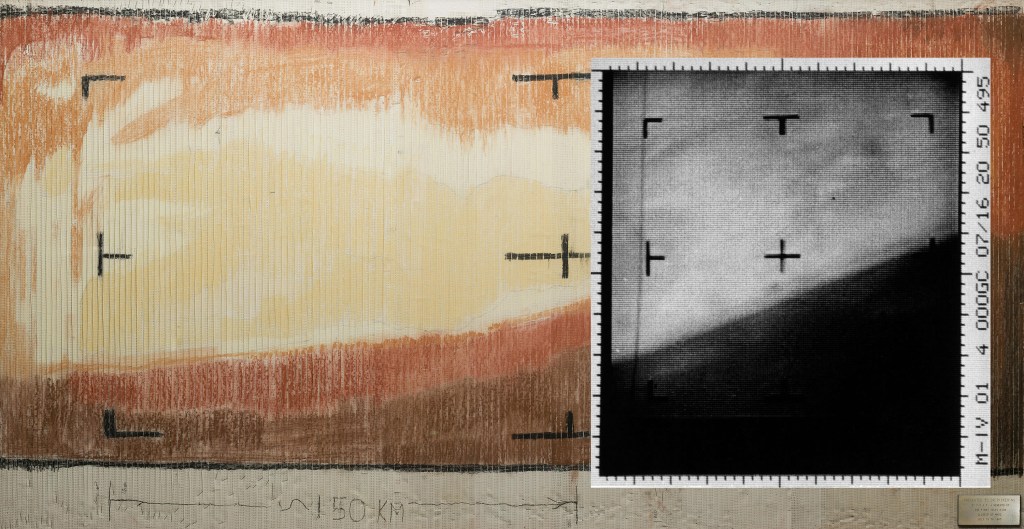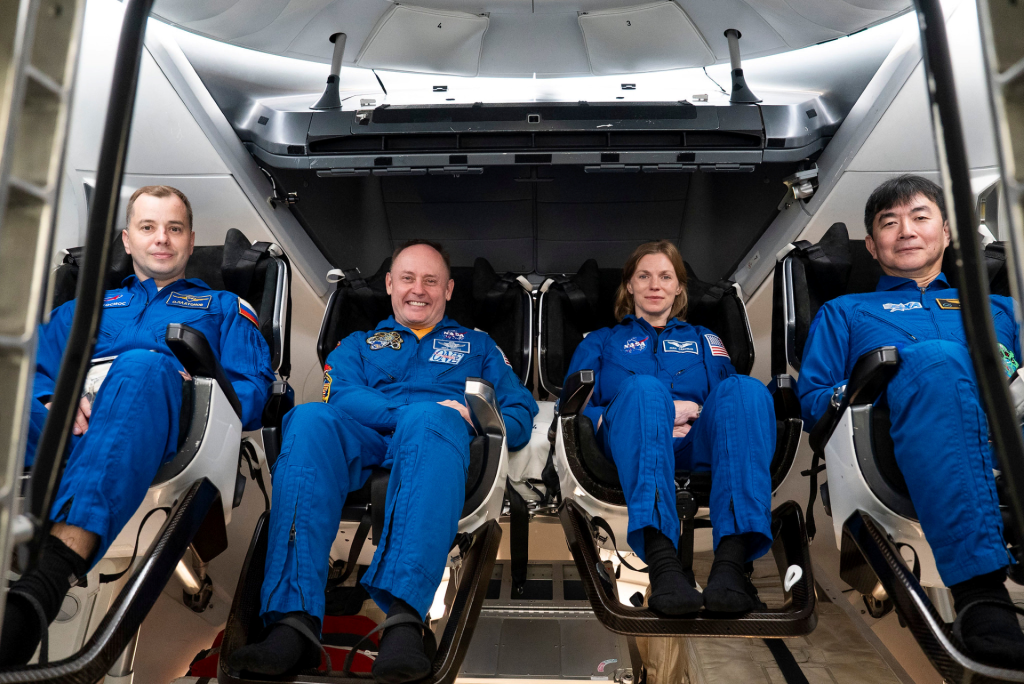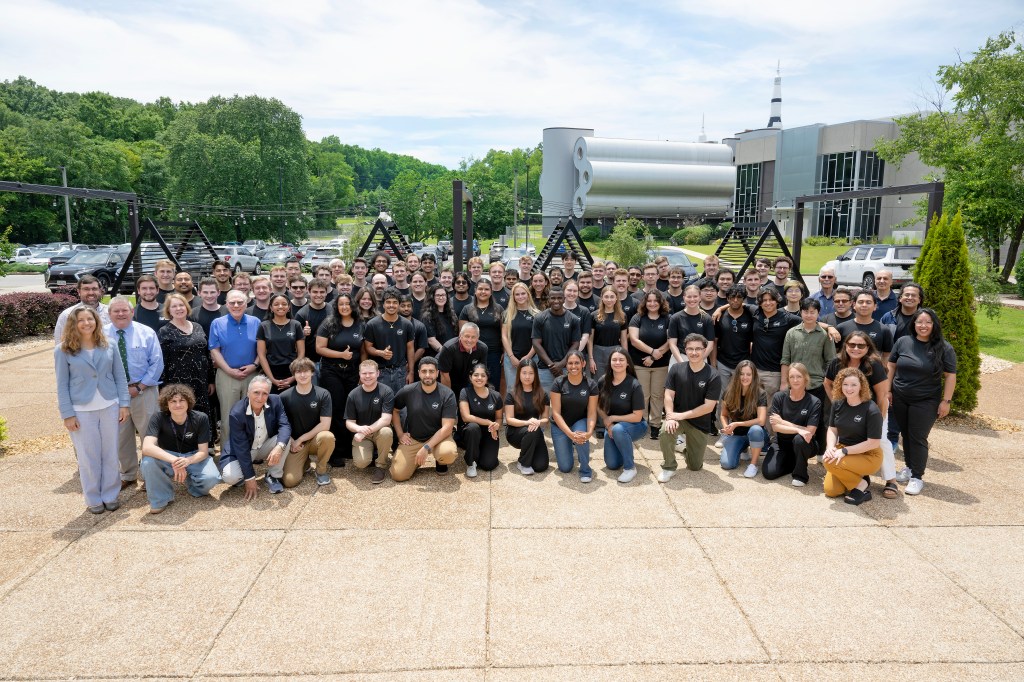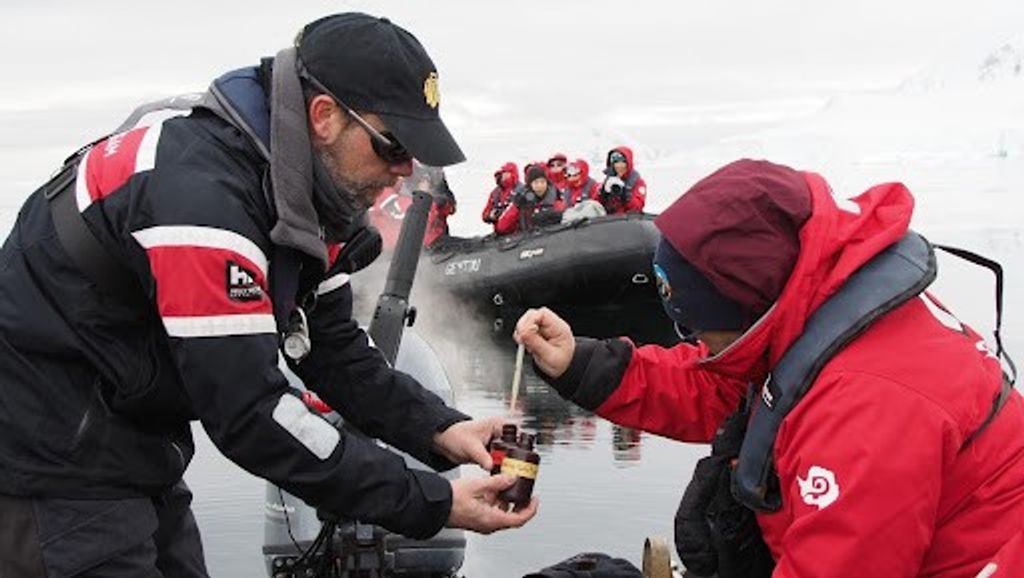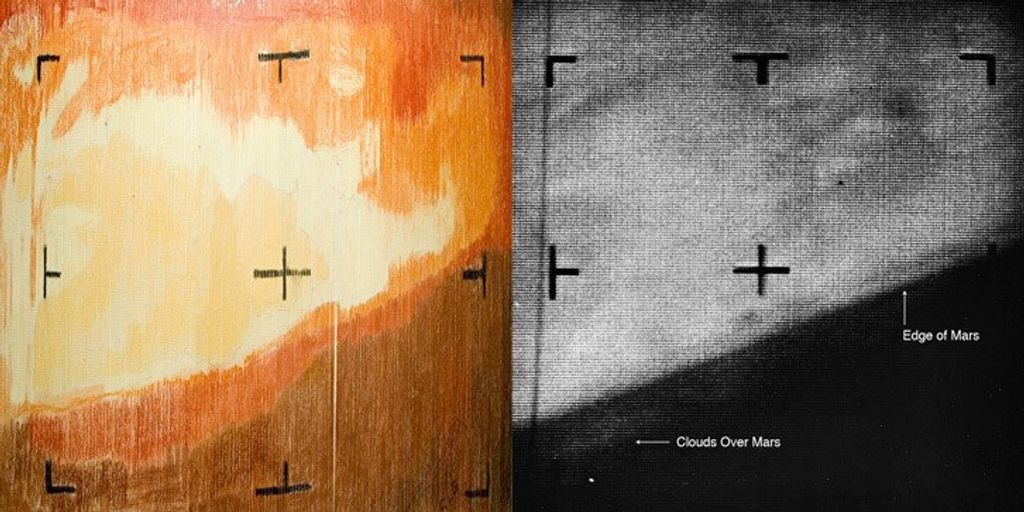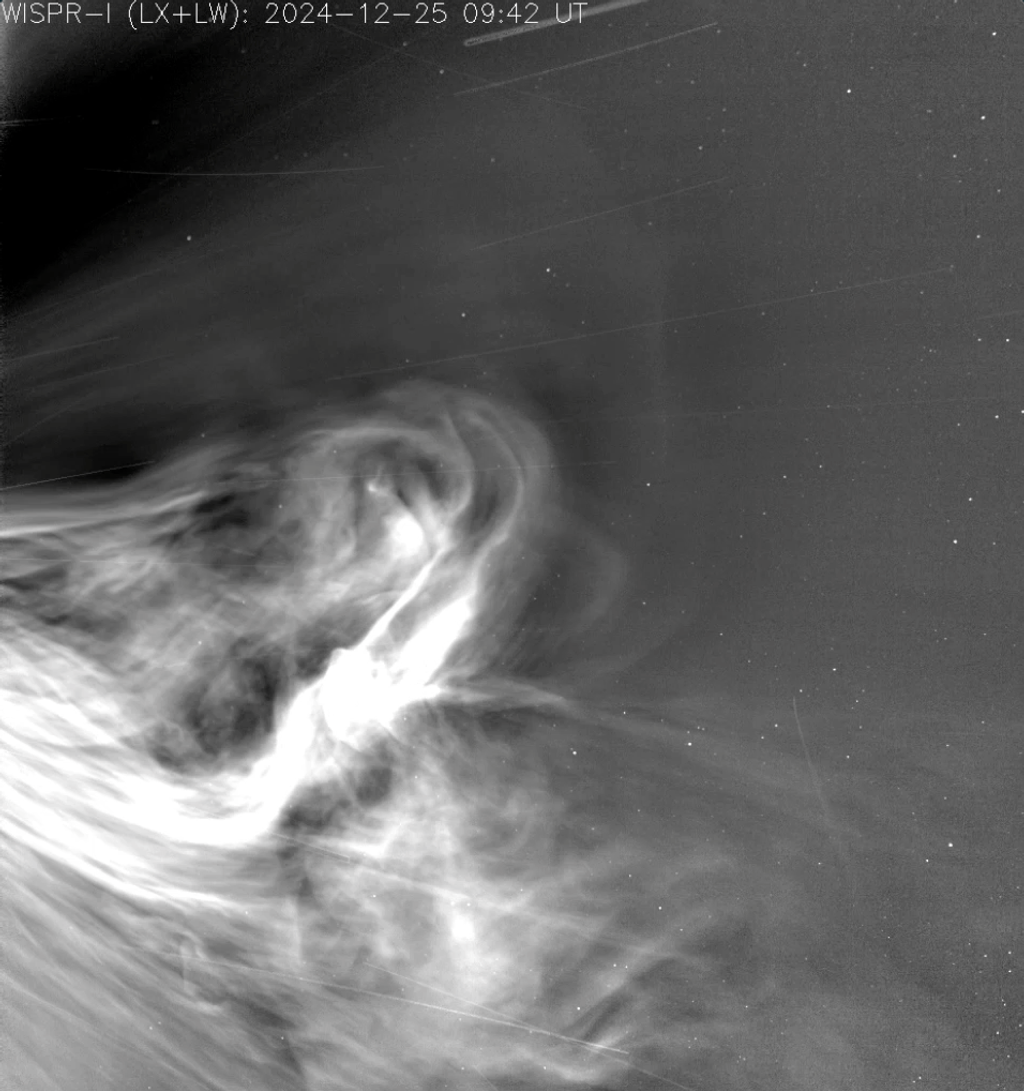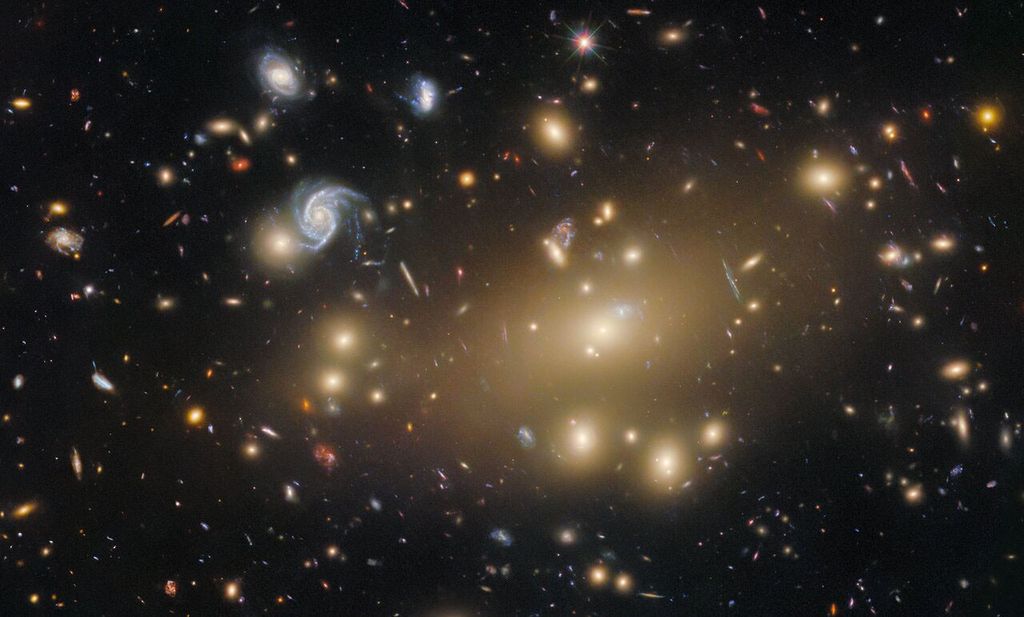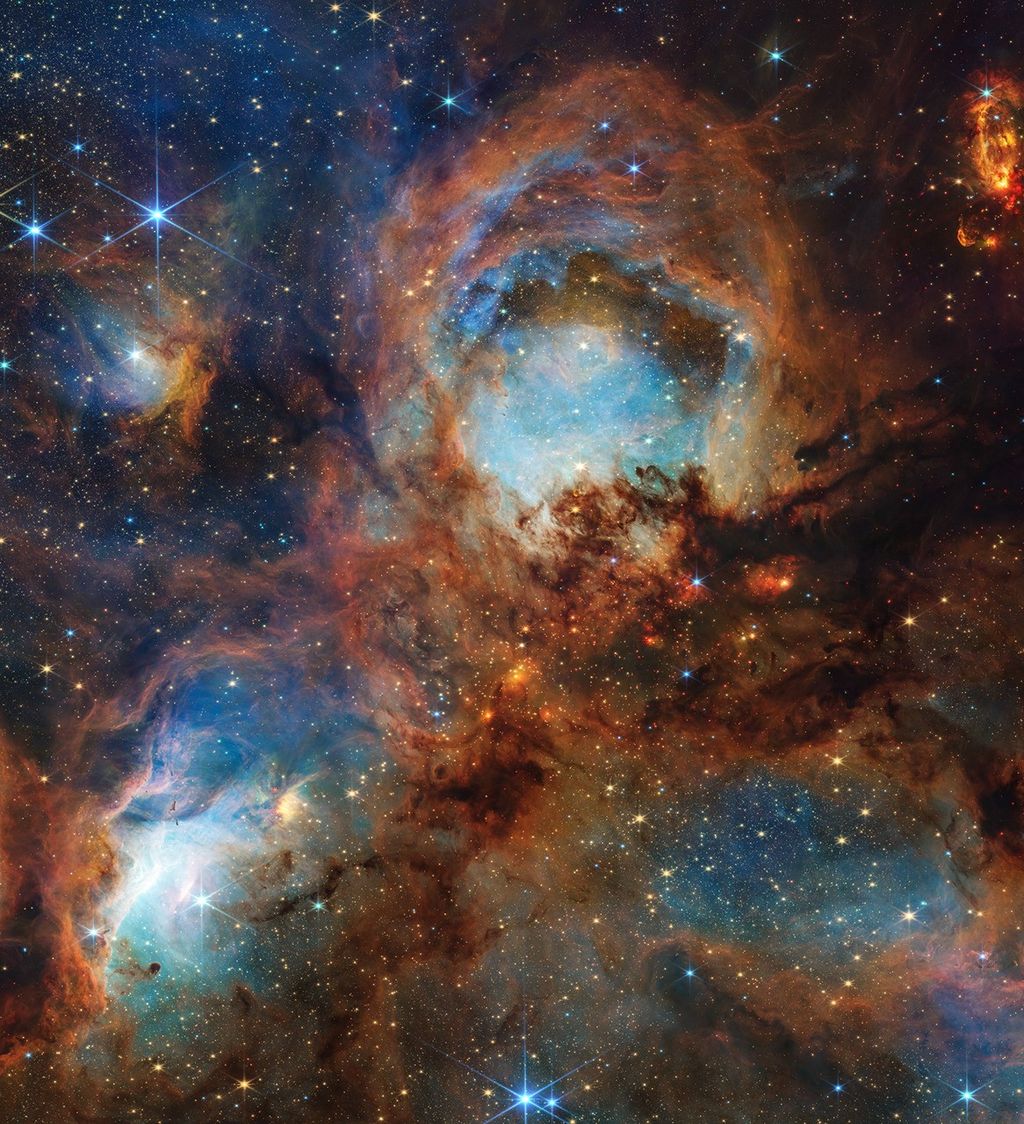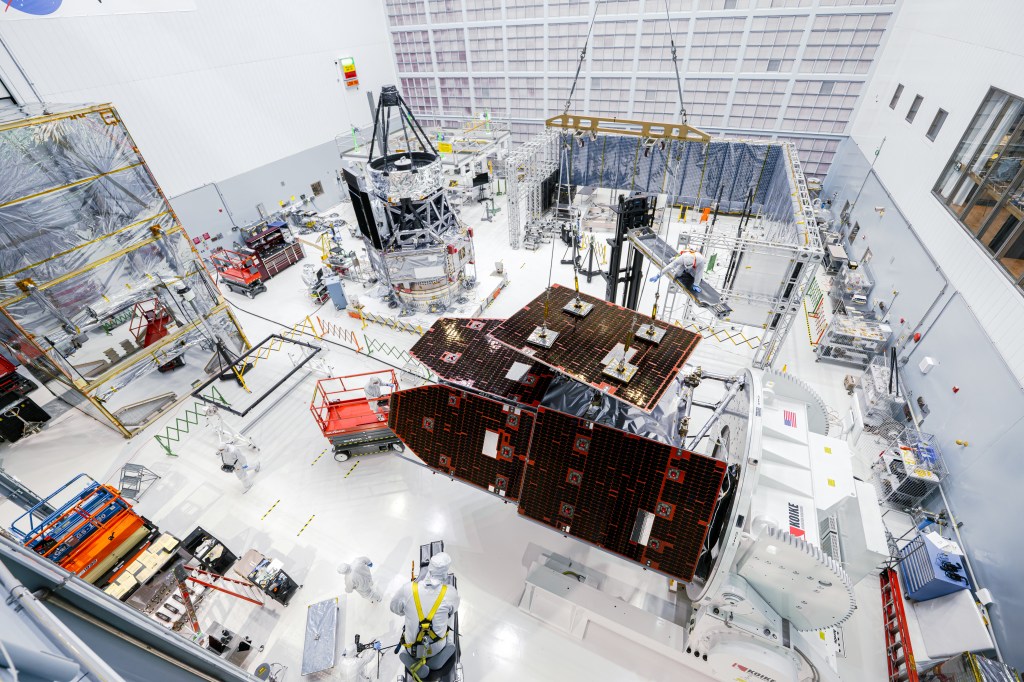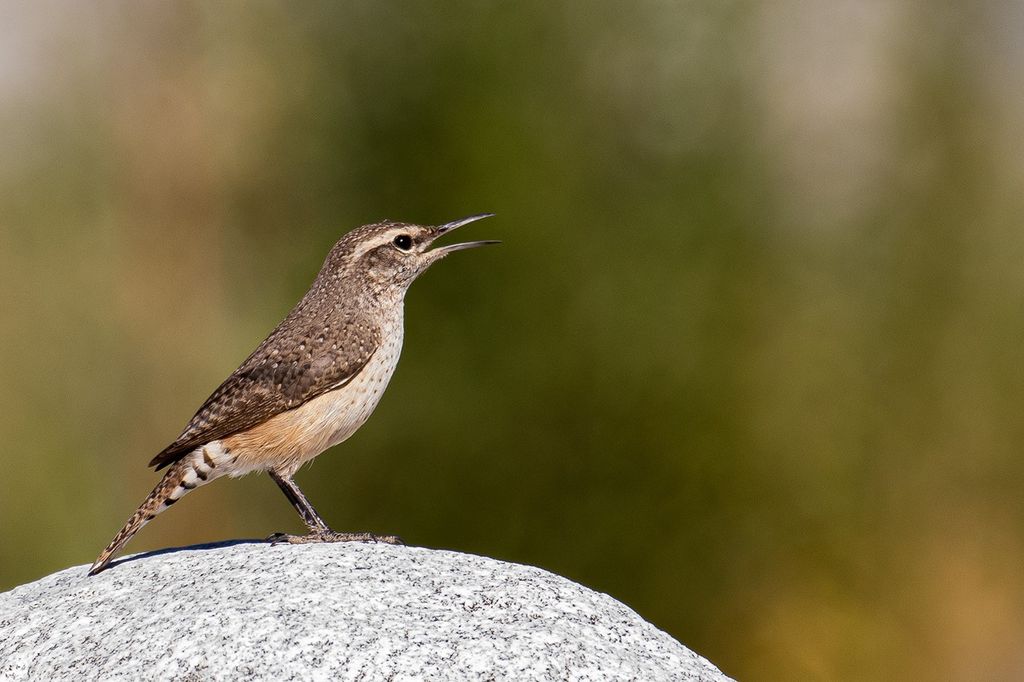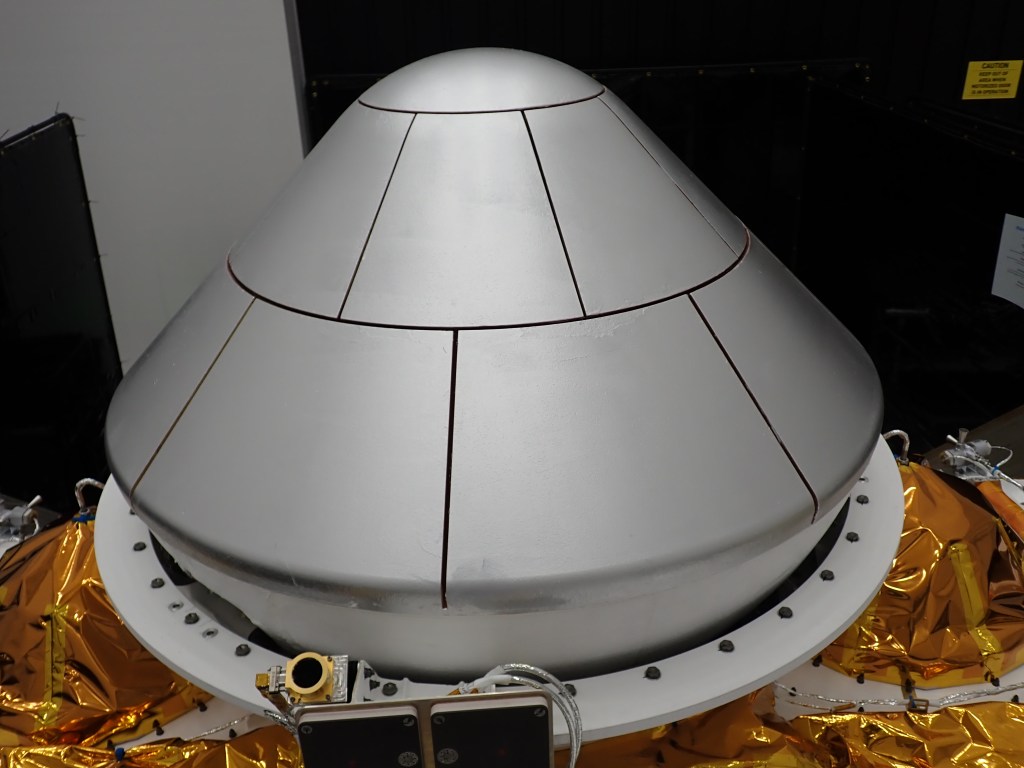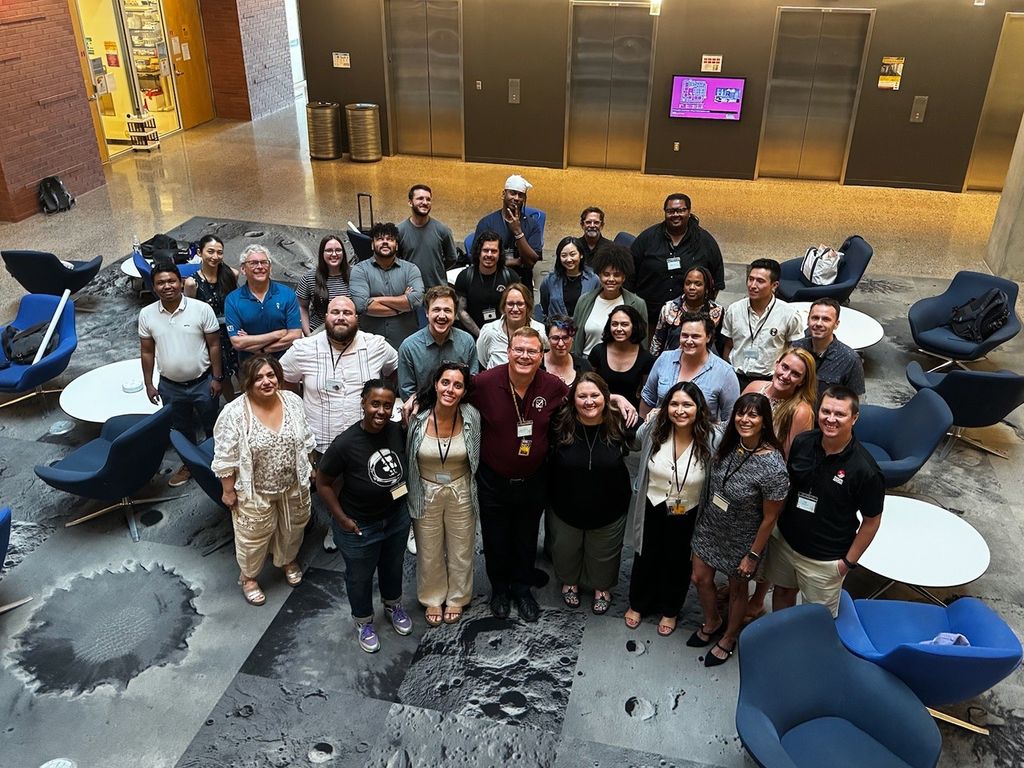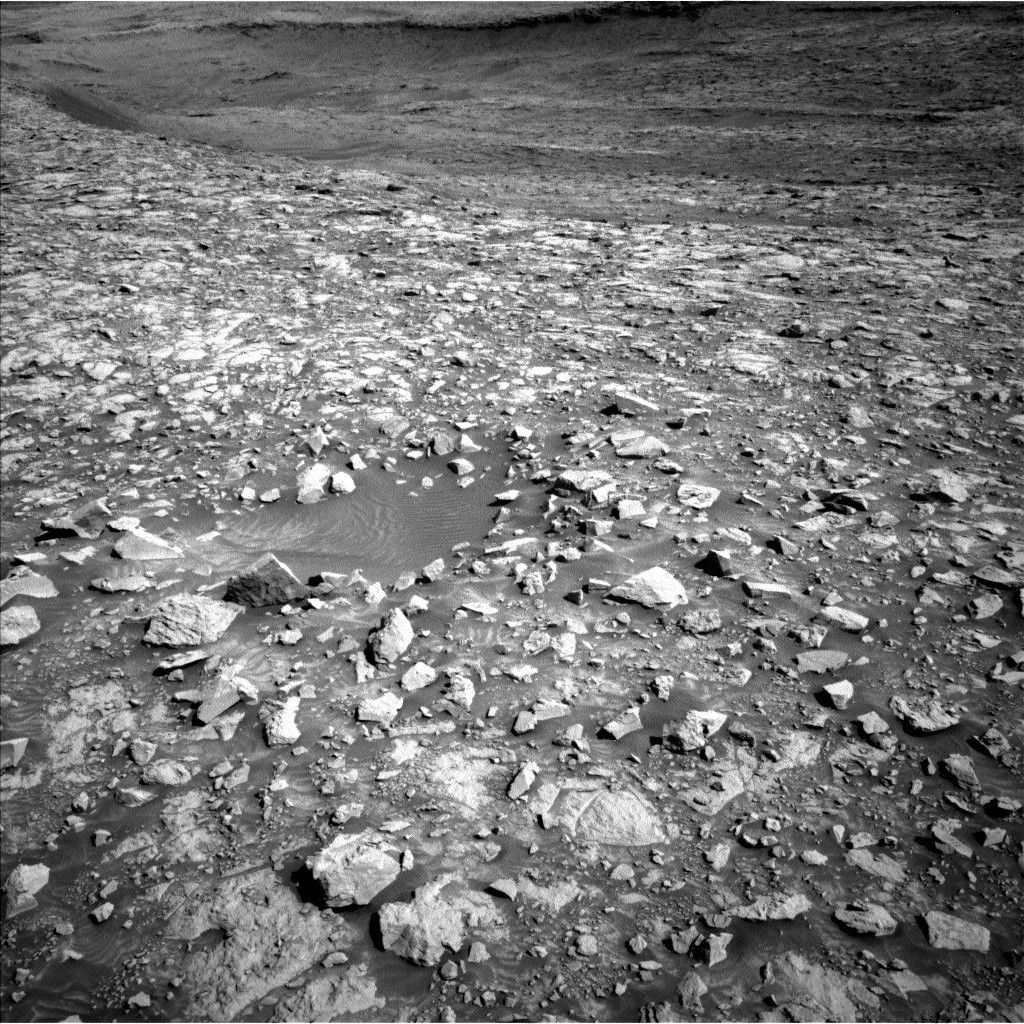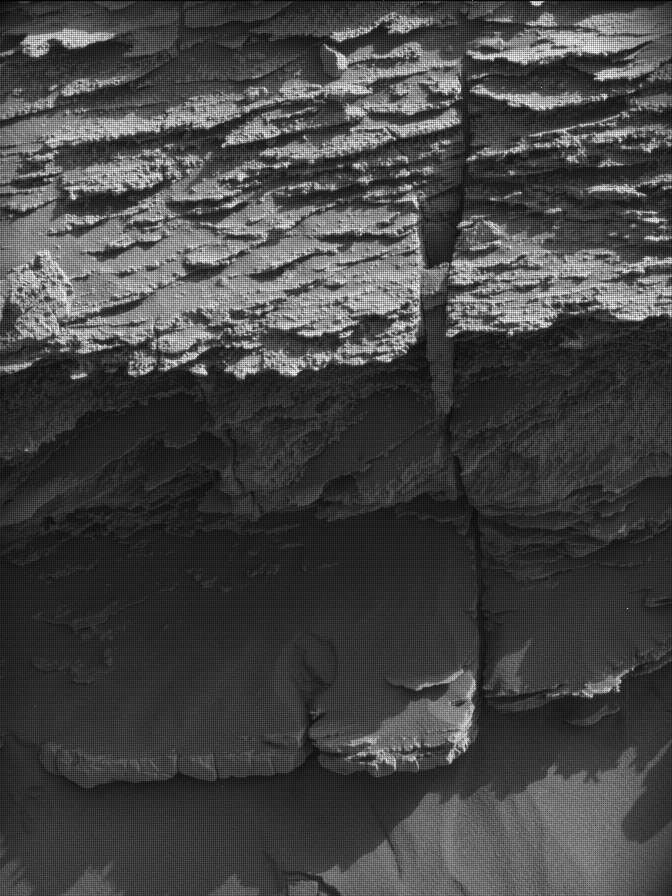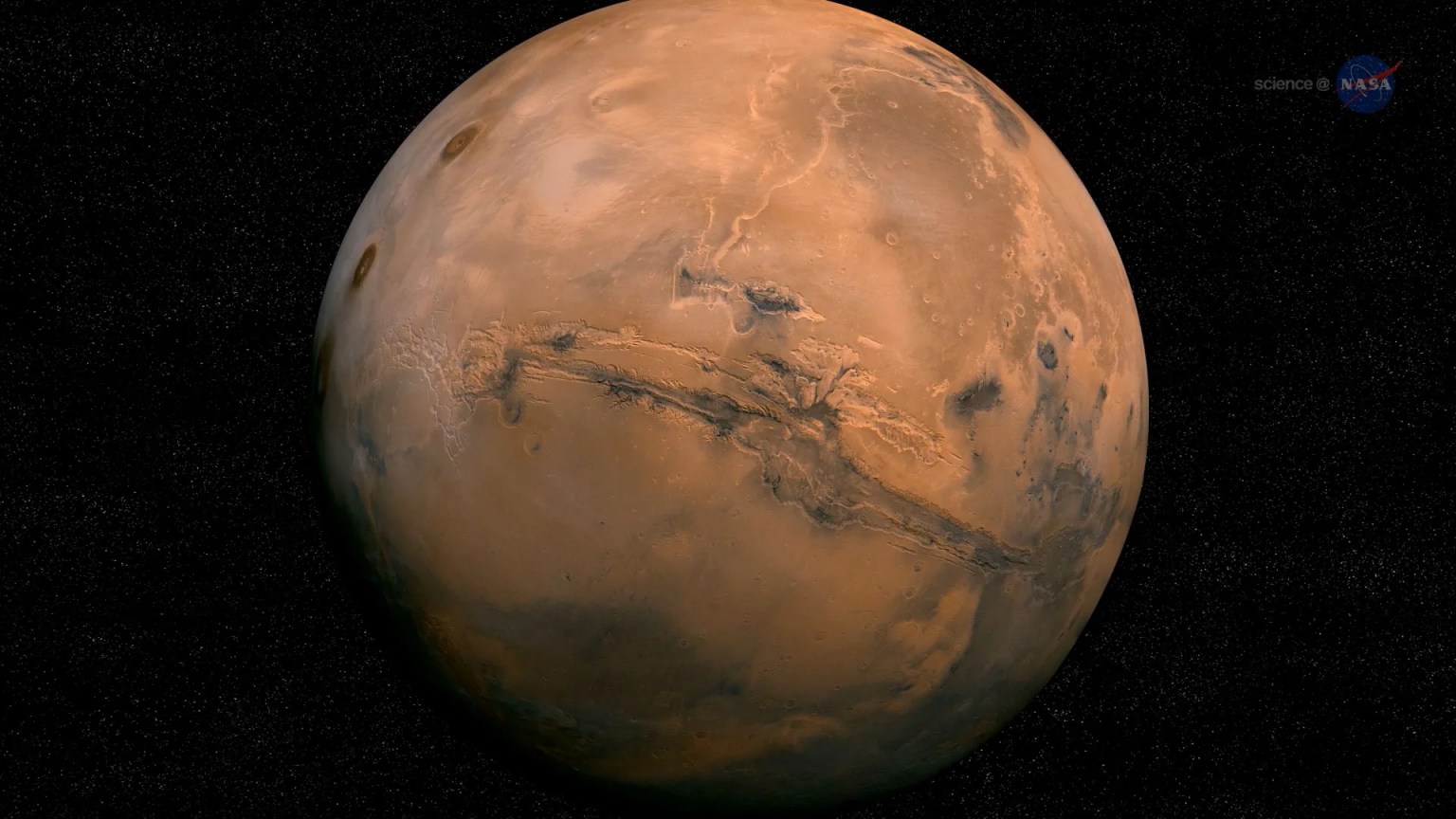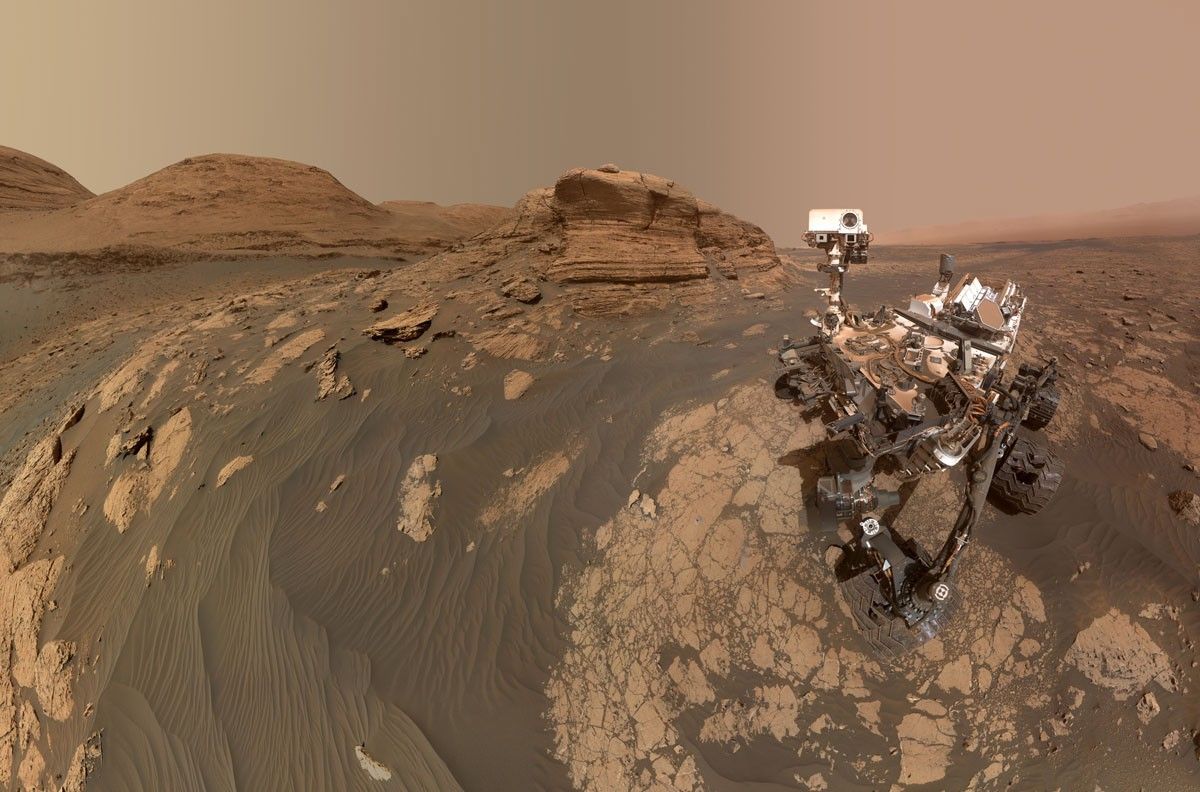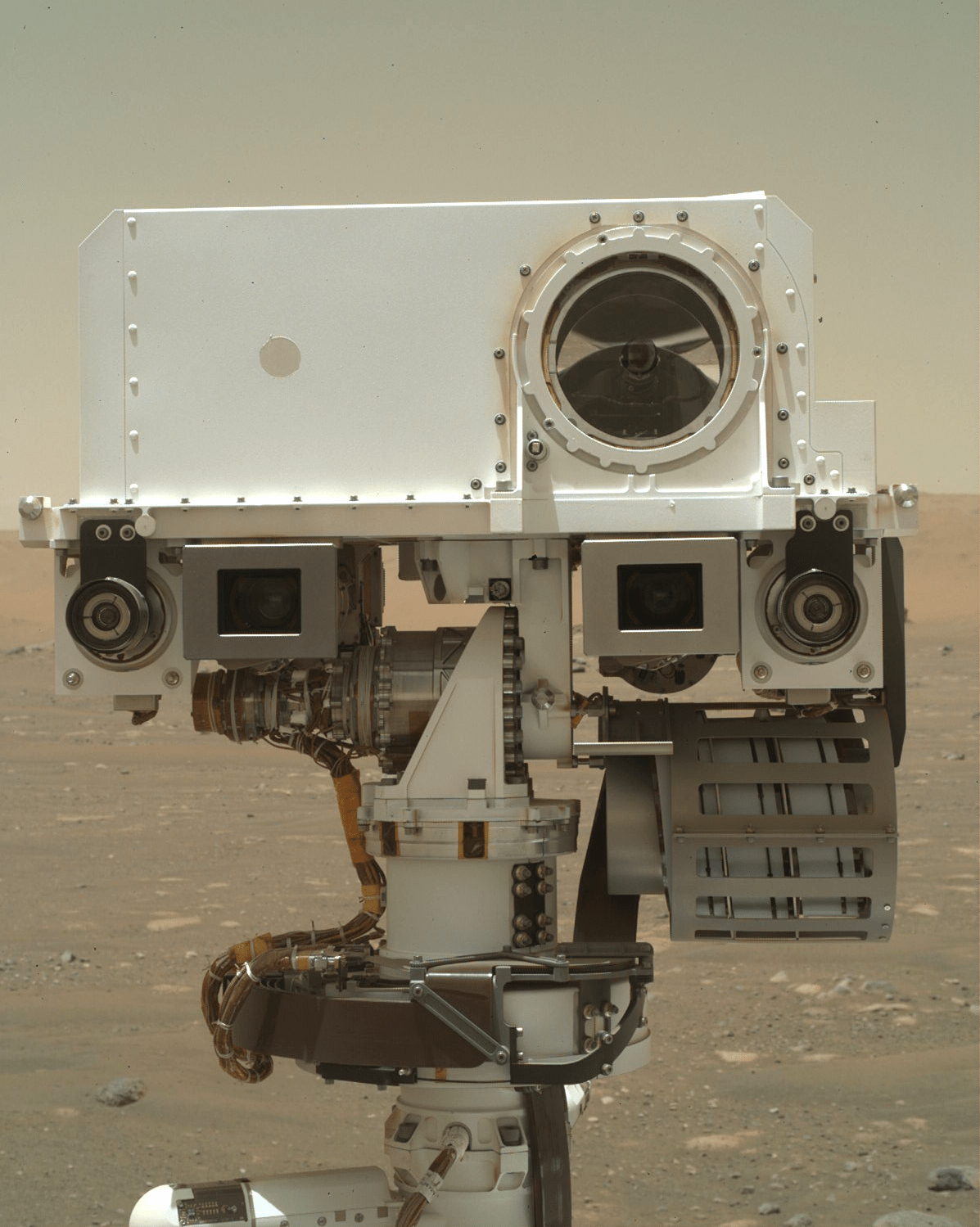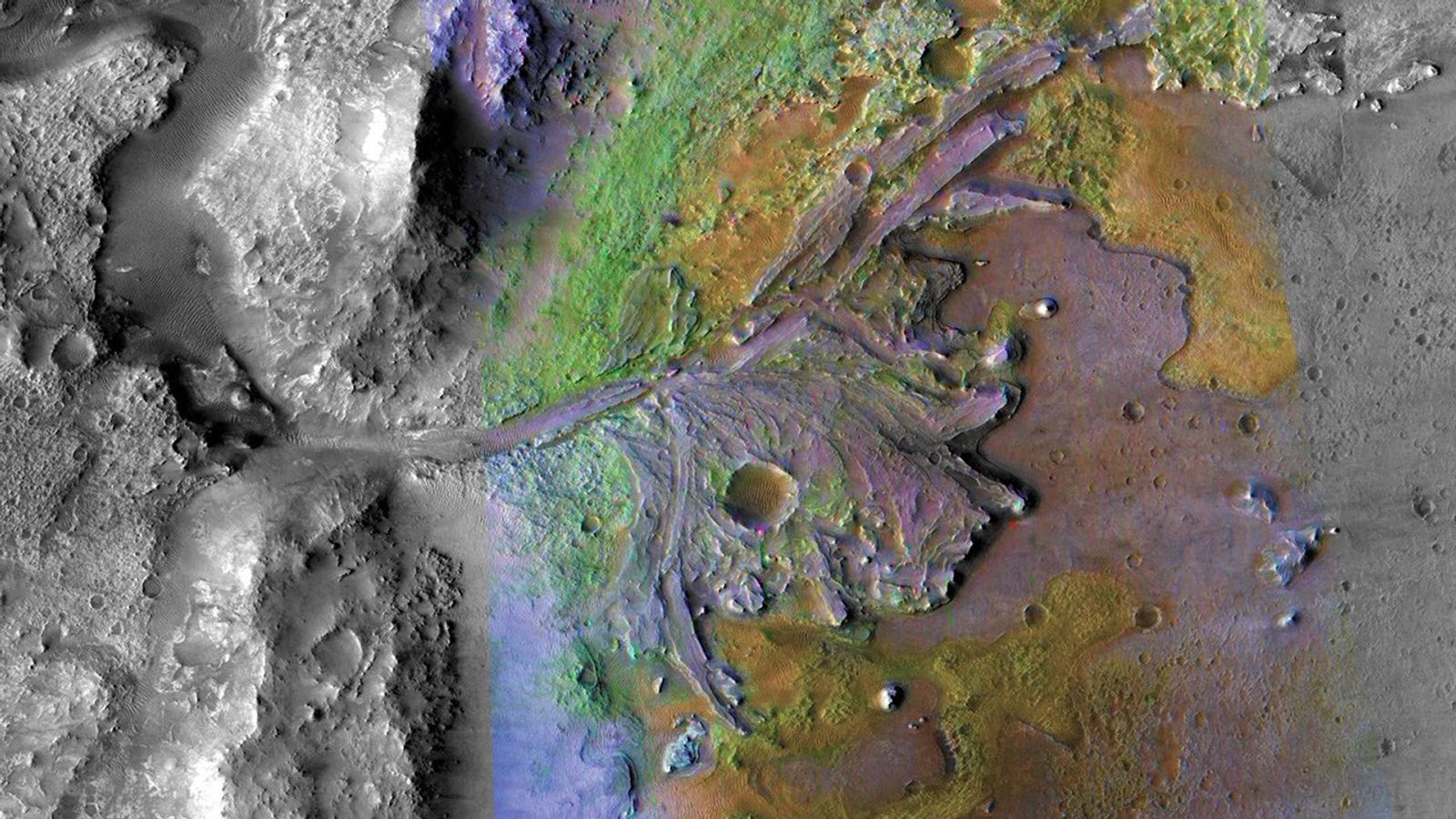MSL is in a good position for contact science observations on an interesting outcrop of sedimentary rock ,
so the rover will be busy this weekend! We had to change the timing of
the arm activities a bit to optimize the illumination of MAHLI targets,
so it was a busy morning for me as SOWG Chair but I'm happy with the
way the plan turned out. On Sol 973, ChemCam
and Mastcam will observe nearby targets "Albert" and "Charity," the RMI
will image a distant target named "Empire," and Navcam will search for
clouds and dust devils. Overnight, CheMin will dump the remaining drill
sample from one of its cells and measure
the cell to confirm that the dump was successful. The arm will be
deployed on Sol 974 and used to acquire a small MAHLI mosaic of
"Bigfork," then place the APXS on the same target for an overnight
integration. The rover will wake up earlier than usual to
measure the amount of dust in the atmosphere at 8 AM
on Sol 975 by imaging the sun. Later that morning, ChemCam and Mastcam
will perform more atmospheric measurements, and the 100-mm Mastcam will
be used to image some distant rock targets. In the afternoon,
the Dust Removal Tool (DRT) will be used to brush the dust off of
"Albert" and take MAHLI images of the brushed spot. The APXS will then
be placed on the DRT spot for an overnight integration. By Ken Herkenhoff
Dates of planned rover activities described in these reports are subject to change due to a variety of factors related to the Martian environment, communication relays and rover status.
Written by Ken Herkenhoff, Planetary Geologist at USGS Astrogeology Science Center



